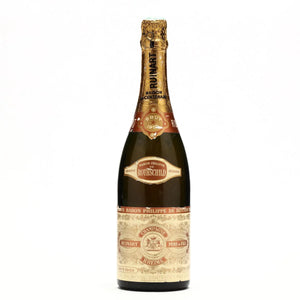- Our Shop

$6,998.99
Lorem ipsum dolor sit amet, consectetur adipiscing elit. Nam eros velit, dapibus ac leo nec, dictum egestas nisl. Sed at cursus dui, nec tincidunt nibh.Lorem ipsum dolor sit amet, consectetur adipiscing elit. Nam eros velit, dapibus ac leo nec, dictum egestas nisl. Sed at cursus dui, nec tincidunt nibh.
Order from the Largest & Most Trusted Premium Spirits Marketplace!
Featured in
NOTICE: Many other small liquor store sites may end up cancelling your order due to the high demand, unavailability or inaccurate inventory counts. We have partnerships consisting of a large network of licensed retailers from within the United States, Europe and across the world ensuring orders are fulfilled.
Producer: Champagne Ruinart
Ratings: WA | 9 JS | 9
Vintage: 1959
Size: 750ml
ABV: 00%
Varietal: Champagne Blend
Country/Region: France, Champagne
Lorem ipsum dolor sit amet, consectetur adipiscing elit. Nam eros velit, dapibus ac leo nec, dictum egestas nisl. Sed at cursus dui, nec tincidunt nibh.Lorem ipsum dolor sit amet, consectetur adipiscing elit. Nam eros velit, dapibus ac leo nec, dictum egestas nisl. Sed at cursus dui, nec tincidunt nibh.
Reviews:
Champagne Ruinart was one of the first Champagne houses, established in 1729. It takes its name from the Benedictine monk Dom Ruinart, whose writings on Champagne were passed down through his family and resulted in the Maison Ruinart we know today. Dom Ruinart was born in Champagne in 1657, and died in 1709. He moved from his home to an abbey just outside of Paris, where he began to learn about the “wine with bubbles”, which was very popular among the young aristocrats of the time. He believed it could be made best on the soils of his hometown. Upon his death in 1709, he left many books containing his writings on this to his nephew Nicolas Ruinart and, 20 years later, Maison Ruinart was founded. The Ruinart house was passed through the family for the next two centuries, during which time they were the first to ship ros√© Champagne, as well as being the first to ship their bottles in wooden cases. From humble beginnings, the house now produces almost 2 million bottles a year and is currently owned by luxury brand superpower LVMH. Ruinart owns vineyards across the Champagne region, predominantly in the C√¥tes de Blancs and the Montagne de Reims. The house style is Pinot Noir-dominant, but the wine’s flavor profile tends to favor Chardonnay. In fact, Ruinart’s prestige cuv√©e, Dom Ruinart, is a Blanc de Blancs made entirely from grand cru Chardonnay grapes, predominantly from the Avize, Chouilly and Le Mesnil vineyards. This wine is aged for 10 years in the underground cellars, which were acquired in the 18th Century and lie under the city of Reims. These cellars, which are 8km (5 miles) long and three levels deep, hold many of the oldest expressions of Ruinart. The non-vintage wines, which include a brut, ros√© and blanc de blancs, are aged for three years before release. All of the wines are vinified in stainless steel, using inert gas to prevent oxidation. Dosage is limited and this helps to reinforce the fresh, flinty and integrated style of Ruinart Champagne.
Only logged in customers who have purchased this product may leave a review.
Bourbon Bridges Ltd ©2024 Privacy Policy

THE ALCOHOL PRODUCTS ON THIS WEBSITE ARE INTENDED FOR ADULTS ONLY.
By entering this website, you certify that you are of legal drinking age in the location in which you reside (age 21+ in the United States).
Reviews
There are no reviews yet.